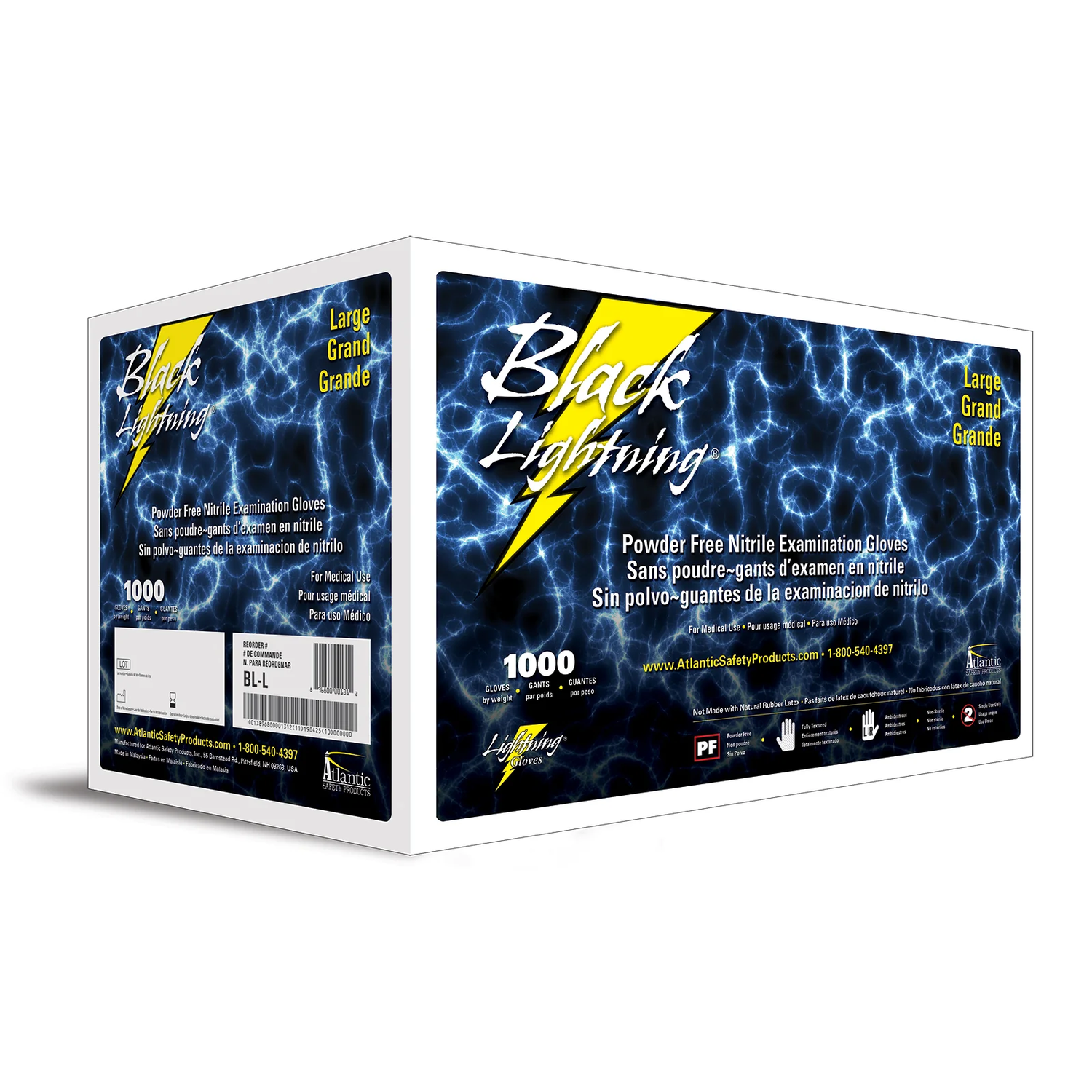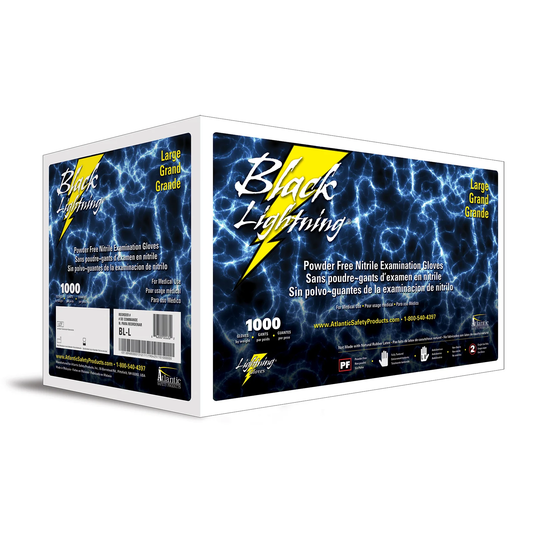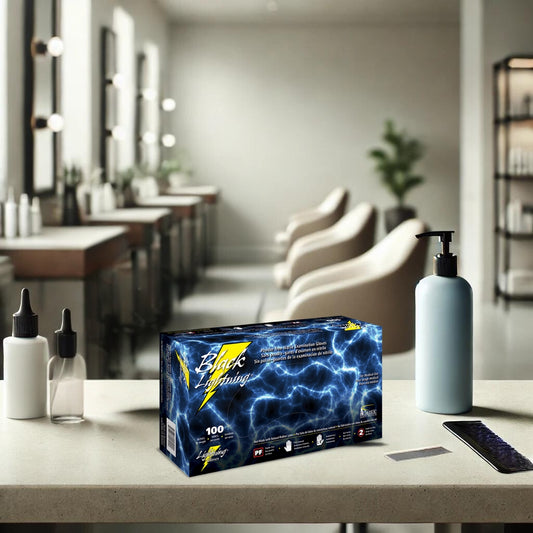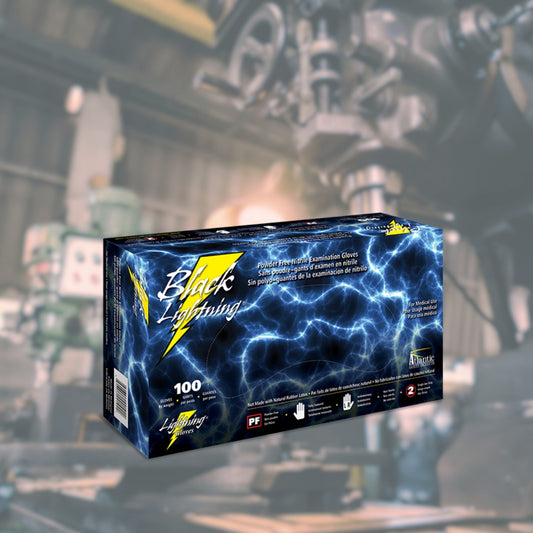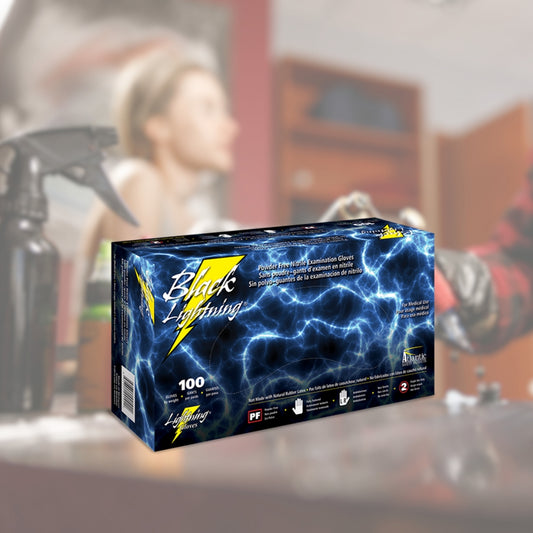OUR KNOWLEDGE
WHEN TO WEAR GLOVES
Our take
Keep it simple ...
Disposable gloves have been around for a long time. During that time, fads have come and gone, but what has remained constant is the need to create a barrier of protection between ones hands and the outside environment.
This protection may be one sided, protect what is on the outside from what is inside or vice versa, or both sides may need protection. Either way, barrier protection has been the defacto standard for many years and will likely remain so for the foreseeable future.
With that in mind, the questions, when to wear gloves, becomes fairly straight forward - any time a barrier, one way or two way, is required.
Well, maybe at first glance it seems straight forward but in practice, is a little less obvious. For instance, up until maybe 15 years ago, it was common place in the United States to prepare food without the use of disposable gloves. And even more recent than that, disposable glove use in many trades within the automotive industry was practically non-existent.
So, clearly standards and expectations are constantly changing. That fact does muddy the waters a bit but it doesn't change the fact that any time a barrier is required between your hands and the outside world, disposable gloves should be a consideration.
If you look at it that way, we're confident you'll make the right choice.
WHY TO WEAR GLOVES
Your hands, your health
It just makes sense ...
A very similar discussion to the one above, when to wear gloves, why to wear disposable gloves has a lot to do with the health of yourself and those around you.
Essentially we're back to the barrier discussion. Be it one way, or two, the reason to wear disposable gloves is protection -- your protection or someone else's.
The difficult part is that the dangers are not always going to be obvious.
For example long-term consistent exposure to various chemicals or toxins can lead to a multitude of hand and/or overall health issues. Your skin is a porous membrane and will absorb what it comes into contact with.
This in many cases provides health benefits but when it come to long-term exposure to various chemicals, it's a real problem and honestly a silent killer.
So make sure you know what you are coming into contact with, regardless of how minor it may seem, and when in doubt wear gloves.
On the opposite extreme, common in medical and hazardous material environments, the need is obvious and in many cases mandated.
In some of these environments, it only takes a single exposure to experience, or cause, significant hand and/or overall health issues -- obviously, wear your gloves.
As with any discussion, there is a lot of grey. We highlighted the extreme scenarios above but there are many other reasons to wear disposable gloves.
For instance within the food service, food production, agriculture and farming industry's, the spread of bacteria and disease is of major concern. To combat this, industry practice has become to wear disposable gloves.
The current trend in most industries, is to error on the side of protection. In most cases, disposable gloves are a cost effective solution to a costly problem. They provide immediate results and offer significant value when considering the alternatives.
Of course, in some cases, it's just about the nails ... we protect them too.
WHAT GLOVES TO WEAR
The right "fit"
Educate yourself, it will pay off ...
Any discussion about what glove you should wear, should contain a combination of science and user preference.
For our purposes, let's start with the characteristics of the material they are made with.
Primarily available in three flavors.
Nitrile - is a synthetic material, extracted from petroleum. It is noted for its resistance to bases, oils, greases and hydrocarbons, and provides an effective barrier from blood borne pathogens. Nitrile gloves offer improved abrasion, cut, and puncture resistance versus latex. The synthetic nitrile polymers which make up the gloves respond to your body temperature and essentially mold the gloves to the shape of your hand. Synthetic nitrile gloves provide an effective, possibly superior, alternative to latex.
- Synthetic Polymer that exhibits rubber-like characteristics
- Protein and allergy free
- Much of the same flexibility, tensile strength, and durability as latex
- Superior to latex gloves in providing protection against petroleum-based products.
- More expensive to produce than latex.
Natural Rubber Latex - is a highly durable and flexible material that provides a high measure of barrier protection against pathogens and environmental contaminants. Natural rubber latex provides good resistance to numerous acids and ketones. It is the most elastic of the disposable glove materials and is relatively inexpensive, though it fluctuates greatly. Products containing natural rubber latex may cause allergic reactions in some individuals. Those using latex gloves who develop a rash, should stop using these gloves immediately and seek an alternative.
- Natural rubber latex is a processed plant product
- Most trusted material and first choice for healthcare settings worldwide
- Consistent fit, flexibility, and resilience. Fits the best!
- Reliable performance and barrier protection against infection and contamination
- Allergic reaction for some users
- Costs fluctuate according to prices of natural resources
Vinyl - is a synthetic plastic material manufactured of Poly Vinyl Chloride (PVC). It has good resistance to acids and bases. Vinyl is the least expensive of the disposable glove materials in use today, however they provide a lower level of resistance to mechanical hazards such as abrasion, cuts, and punctures as vinyl is not as elastic or strong as other materials. Vinyl gloves are commonly used in applications for food service, food processing, light duty maintenance and clean-up, and laboratory testing (especially where resistance to acids is required).
- First synthetic material available to consumer
- Composed of polyvinyl chloride and plasticizers that softens the material.
- Economical alternative to latex gloves. Cheapest material used for gloves!
- Great for basic hand protection in a low infection environment.
- Good multi-purpose glove for general use and activities that do not require highest degree of tactile precision.
- Allergy Free!
- Does not fit as well as latex
With various characteristics.
- Thickness, strength, stretch & weight (AKA Mil, Modules/Tensile, Elongation & Grams) - Each of these properties directly impact the performance of the glove. Typically as thickness and weight increase, so does strength, but stretch decreases. This is important because the stretch of a glove has a lot to do with its fit and feel. The more stretch in the glove, the better it will feel and ultimately perform. This is because when choosing a glove, heavier and/or thicker is not necessarily better. In reality, the right "fit" is actually the glove that will provide the necessary protection while providing the least amount of interference and/or discomfort.
- Grip, texture & residue - Each of these terms further describes the feel and function of the glove. Grip, texture and residue are all interrelated. Too much grip and you can't easily get the glove on or off, requiring the use of powders which carry residue and can be undesirable and harmful, to little, and you need extra texture to make up for the lack of grip. Hand in hand, they form the an extremely important balance that is a key differentiator between high quality and low quality gloves. Also, one common misconception about the texture of a glove is that it determines the level of grippiness. In reality the grippiness of a disposable glove has a lot more to do with the chlorination process than the texture. By exposing the gloves to a chlorine solution and then washing, the more the better, and leeching, manufacturers are able to control the tackiness of the base material and ultimately create that balance that is so desirable.
- AQL (Acceptable Quality Level), grade & packaging - Each of these terms is used to establish the quality standards and expectations as well as the storage and sterility requirements of the gloves. AQL is a pass/fail criteria based on sampling defect allowances (Surgical: 1.5, Exam: 2.5, Industrial: 4.0) used by the FDA, to establish standard quality measures. Grading is used by the factory in order to establish production guidelines and acceptable allowances. And packaging is determined based on the acceptable exposure levels of the product. In most cases the packaging is the same between the various grades - sterile products would be the exception and require significantly more oversight with regards to production, testing and packaging requirements.
- Color, cuff (length & style), and wearability features - For the most part these are cosmetic and or specific use items, maybe with the exception of cuff length which really can increase barrier protection where applicable. Overall, they don't really offer advancements with regard to barrier protection but that doesn't mean they are any less important. For example in recent years, Orange has become a popular color for disposable gloves when being worn wherer High
- Visibility is important. So, in that situation, they may not increase your barrier protection but might add protection with regards to visibility, no less important. Also, this is where you find Aloe infused gloves or PH balanced gloves, which offer significant advances with regards to comfort and wearability - a really important area when the amount of time wearing disposable gloves is considered.
And organizational reliability and support.
Aside from the gloves themselves, the last piece of the pie is the name behind them. Can they support your needs? Are they able to meet your requirements? Will they offer you value?
Those are the magic questions. Sometimes saying the words isn't enough. In some cases you have to experience it for yourself.
If you've made you way through our site, you know that Our motto is "designed with you in mind," and our philosophy is to find your right "fit."
Whatever that may be, that is our objective.
If you haven't worked with us, give us a shot. We've already done much of the legwork and have considered all of the information above. No gimmicks and no tricks, just quality products and outstanding service.
